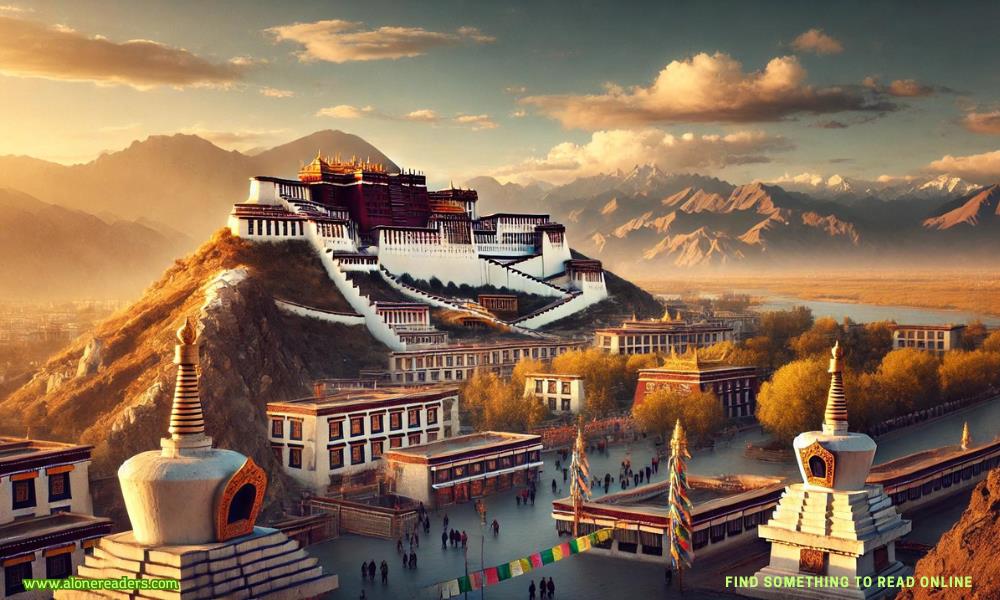
Lhasa, the capital of Tibet, is often referred to as the "Roof of the World." Nestled in the Himalayas at an altitude of over 3,650 meters (12,000 feet), this ancient city is not only a breathtaking destination but also the spiritual heart of Tibetan Buddhism. With its rich history, sacred sites, and stunning landscapes, Lhasa offers a profound experience for travelers seeking both adventure and enlightenment.
Lhasa is a city where the past and present seamlessly blend. Its streets are filled with the hum of monks chanting prayers, the flutter of prayer flags in the wind, and the scent of burning incense. The city's most iconic landmark, the Potala Palace, stands as a symbol of Tibetan Buddhism and is a must-visit for anyone traveling to Lhasa. This UNESCO World Heritage site, once the winter residence of the Dalai Lama, offers a glimpse into the spiritual life of Tibet and provides panoramic views of the surrounding mountains and valleys.
Potala Palace
The Potala Palace is the most recognizable structure in Lhasa, towering over the city with its white walls and red roofs. Visitors can explore its many chapels, assembly halls, and tombs of past Dalai Lamas. The intricate murals and artifacts housed within the palace tell the story of Tibet's religious and political history. A visit to the Potala Palace is a humbling experience that leaves a lasting impression on all who enter.
Jokhang Temple
Another UNESCO World Heritage site, Jokhang Temple is considered the holiest temple in Tibetan Buddhism. Located in the heart of Lhasa, this temple is a pilgrimage site for Buddhists from all over the world. The temple's golden roof gleams in the sunlight, and inside, you’ll find a statue of Jowo Shakyamuni, believed to have been blessed by Buddha himself. Walking around the Barkhor, the bustling market surrounding the temple, is an experience in itself, where you can observe pilgrims performing kora, a sacred circumambulation around the temple.
Sera Monastery
Sera Monastery is one of the great monasteries of Lhasa and is renowned for its vibrant monk debates. These debates, held in the monastery’s courtyard, are a unique spectacle where monks challenge each other on Buddhist philosophy with intense energy and enthusiasm. The monastery also houses beautiful murals and statues that reflect the deep spiritual traditions of Tibet.
Getting to Lhasa requires some planning, as it is located in a remote and high-altitude region. Most travelers fly into Lhasa Gonggar Airport, which is well connected to major Chinese cities like Beijing, Chengdu, and Shanghai. A round-trip flight from Beijing to Lhasa typically costs around $600 to $1,000, depending on the season. Alternatively, you can take the Qinghai-Tibet Railway, which is an incredible journey through some of the most stunning landscapes in the world. The train ride from Xining to Lhasa takes about 21 hours, and a ticket can range from $100 to $250.
Accommodations
Lhasa offers a variety of accommodations to suit different budgets. For a luxurious stay, consider the St. Regis Lhasa Resort, where rooms start at around $300 per night. This hotel combines modern amenities with traditional Tibetan decor, offering stunning views of the Potala Palace. For a more budget-friendly option, the Yak Hotel, located near Jokhang Temple, offers rooms starting at $40 per night. This hotel is a favorite among backpackers and offers a cozy, welcoming atmosphere.
Dining
Tibetan cuisine is hearty and flavorful, perfect for the high-altitude climate. A must-try dish is momos, Tibetan dumplings filled with meat or vegetables. You can find them at many local eateries, including Tibetan Family Kitchen, where a meal typically costs around $5 to $10. Another local favorite is thukpa, a noodle soup that is both nourishing and delicious. For a more upscale dining experience, try Dunya Restaurant, which offers a mix of Tibetan, Indian, and Western dishes. A meal here can cost between $20 to $30.
Budget Breakdown
Travel Tips
Conclusion: A Journey to the Heart of Tibet
Lhasa is more than just a destination; it’s an experience that stays with you long after you leave. The city's spiritual energy, rich history, and stunning natural beauty make it a place like no other. Whether you're exploring ancient monasteries, trekking through the surrounding mountains, or simply soaking in the atmosphere of this sacred city, a trip to Lhasa is a journey to the heart of Tibet.